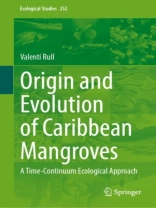This book provides a comprehensive, detailed, and coherent spatio-temporal account of Caribbean mangrove evolution from its evolutionary origins to the present that is not available for any mangrove region in the world. Mangroves are intertidal wetland forests that play a crucial role in the maintenance of terrestrial and marine biodiversity, and in the functioning of global biogeochemical cycles (especially the carbon cycle). These ecosystems dominate the tropical/subtropical coasts of all continents and are among the most threatened ecosystems in the world. This book combines all temporal scales, from the geological to the ecological, to provide an integrated picture of mangrove history and the natural and anthropogenic drivers of ecological and evolutionary change. This may be useful not only for understanding the current ecological status of these emblematic ecosystems, but also for informing their conservation in the face of ongoing global change.
Daftar Isi
Chapter 1. Introduction.- Chapter 2. The Caribbean Mangroves Today.- Chapter 3. Eocene Origin.- Chapter 4. Oligocene Revolution.- Chapter 5. Neogene Diversification.- Chapter 6. The Pelliciera Taxon Cycle: a Time-Continuum Integrative Synthesis.- Chapter 7. Quaternary Shifts and Anthropization.- Chapter 8. Rise and Fall: Summary and Conservation Insights.
Tentang Penulis
Valentí Rull is biologist with a Ph D in Paleoecology. During the last 40 years, VR has used past ecological evidence to address topics such as i) the type and characteristics of biotic responses to environmental change; ii) the role of human and climatic drivers as causes of ecological change; iii) the role of tectonics, paleogeography and climate change on the origin of biodiversity; iv) hypothesis testing on long-term ecological processes; and v) predictions of biotic responses to possible future climate scenarios. VR has conducted his research on several temperate, tropical and subtropical regions, including the northern tropical Andes, the Orinoco lowlands and delta, the Guayana region, the Maracaibo basin, Easter Island, the Azores Islands and the Pyrenees. Dr. Rull has published 14 books and more than 300 articles, and is listed in the Stanford World’s Top 0.5% paleontologists and Top 10 palynologists (career-long and last-year versions).












